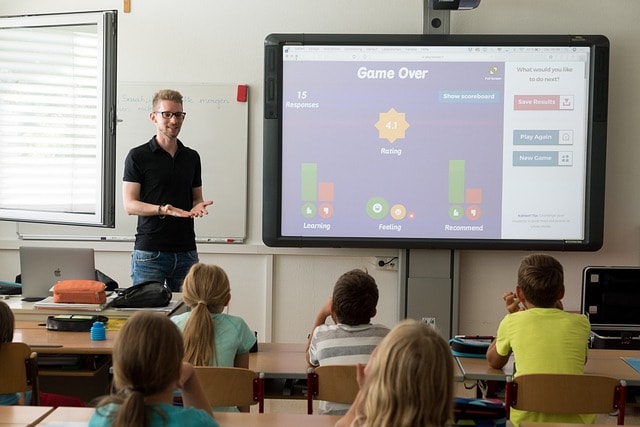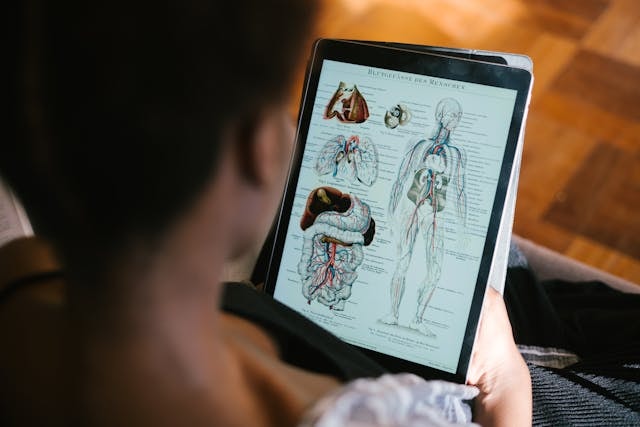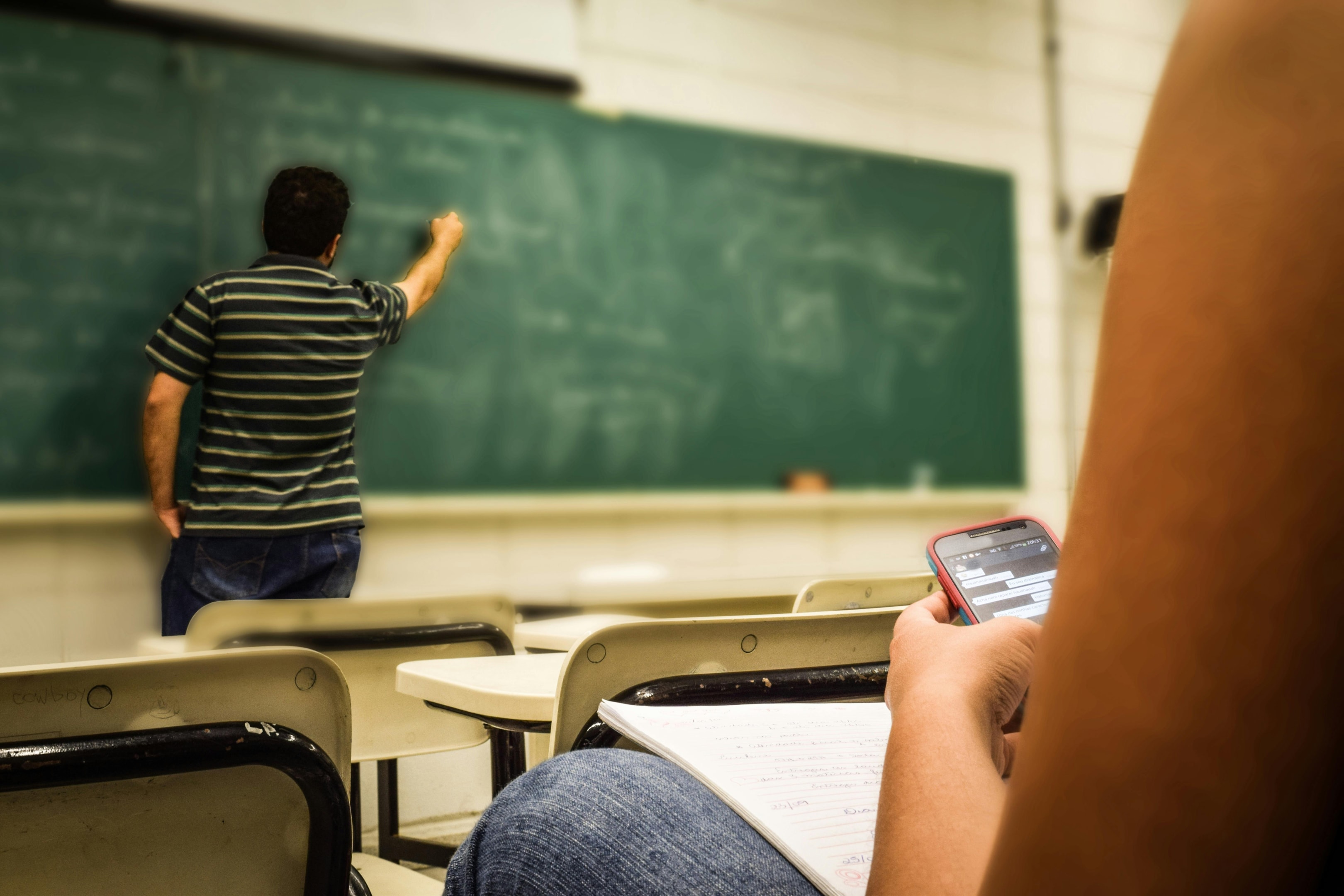 Marijana Gligoric
Marijana GligoricThe Impact of AI in Education: Prometheus's Flame or Pandora's Box ?

Today's education systems, with their standardized curriculum and lesson-based format, have roots in the Prussian education system from the early 18th century. But the essence of the system is older. And, in some way or another, it always relied on a bond between a teacher and their students.
To conduct their jobs properly, teachers had to establish a genuine human connection with their students. But prophets of doom and gloom would have us believe, based on the meteoric rise of artificial intelligence, that even the jobs that require a human touch are in danger of becoming irrelevant.
AI carries with it the promise of automating tasks and personalizing education. Many see it as the future of learning. But can it fully replace teachers in their roles as motivators who nurture their students' curiosity and critical thinking?
In this blog, we provide a level-headed overview of the pros and cons of using artificial intelligence in education and reveal whether teachers are indeed going the way of the dinosaur.
What is AI in Education?

Great teachers are great motivators. Try to remember any of the teachers who left a lasting impression, and you'll likely come up with somebody who sparked a sense of curiosity in you.
Learning is a solitary activity for the most part; you either internalize the facts or you don't. Getting you to care enough to want to learn is the trick. Great teachers will reel you in and make you care about their subject by using stories, props, and bravado.
AI tools in education are just that – tools that great teachers can use to make their students care about their subjects. Either by saving time on the more mundane, repetitive tasks like grading and report writing, leaving teachers with more time to focus on motivating and encouraging their students. Or by adapting content to suit each student's individual needs and pace, helping students engage with the material more effectively.
Finally, AI can streamline administrative tasks, reducing the load on teachers and allowing them to focus more on their students and actual teaching.
Benefits of AI in Education

Teachers have it tough these days. Class size is increasing. And so is the bureaucracy they need to plod through each day. Not to mention that standardized testing kills off any notion of creative, in-depth learning.
Luckily, AI tools can bear at least some of this brunt. Here's how:
-
Personalized learning – AI tools can use data analysis to gauge what areas a student finds difficult and should focus on and what areas they're good at. They make it easy for the teacher to focus on areas where the student needs improvement.
-
Automating administrative tasks – AI is great for handling mundane tasks like grading papers and writing reports, allowing teachers to do their actual jobs – teach.
-
Real-time feedback – Thanks to AI, students can instantly know whether whatever they're working on, like a math or writing assignment, is correct. It allows the student to fix the problem immediately and learn more quickly.
-
Improved engagement – AI can create custom games, quizzes, and even more complex stuff like videos, making learning more dynamic and exciting.
So you see, using AI can not only help the students but can also shift the focus of the teaching position back from the humdrum of administration and bureaucracy to the creative and fulfilling role it once had.
AI-driven solutions are already making their mark in educational platforms across the globe. Duolingo, an app that helps users learn languages through interactive lessons, quizzes, and fun challenges is probably the most recognizable EdTech platform currently on the market. It’s known for its smooth interface, game-like rewards, and quick daily lessons, which make language learning engaging and accessible.
CoffeeTalk is another gamified EdTech platform designed based on input from actual English teachers to activate passive language knowledge. It offers tailored lessons, exercises, and feedback, plus voice recording and progress tracking features to enhance user engagement.
From the financial niche we have EconomiaAI, an app that blends FinTech and EdTech into a unique platform using an AI-powered onboarding survey to tailor investing lessons, quizzes, and hypothetical portfolios to users’ knowledge and goals. The survey ensures each user is presented with a unique dashboard corresponding to their interests and skill levels.
Uses of AI in Education
Today, education faces two serious challenges. The first one is teachers being increasingly burdened with administrative tasks, making classes about as fun as a trip to the DMV for both them and students.
The second one is that growing class sizes are making it difficult for teachers to dedicate enough time to each student's individual needs. There are many things that teachers can use AI for, but the most significant results boil down to saving time and creating unique, personalized content.
In the following sections, we explore three types of emerging technologies that are sure to help teachers with improving educational outcomes.
Intelligent Tutoring Systems

Teachers spending enough time with each student individually was always a pipe dream. More affluent parents could provide their kids with private tutors, but this personalized approach remained out of reach for most students.
A study conducted on the higher education level showed that over four years, students who underwent tutoring achieved 7% better results than their counterparts.
Intelligent Tutoring Systems are AI-powered educational tools that can simulate tutoring by providing students with personalized instruction and instant feedback. Like great teachers, these systems track students' progress and pinpoint areas they need to improve. They also use different learning activities like educational games, problem-solving exercises, and simulations to keep the students engaged.
Here are a few examples:
-
Carnegie Learning’s Cognitive Tutor – Math tutoring system that uses cognitive models to track student progress and provides help where needed.
-
ALEKS – Web-based ITS for math, chemistry, and business. ALEKS assesses student knowledge and provides individualized paths to fill gaps.
-
AutoTutor – For reading comprehension and problem solving. AutoTutor talks to students, asks questions and gives feedback based on their answers.
Automated Grading and Feedback Systems

In a survey conducted by the EdWeek Research Center, teachers reported that during the typical workweek, they spend around five hours grading student work and another three hours doing general administrative work. Think about it - that's one-fifth of the standard workweek teachers could spend on more meaningful work.
Automated Grading and Feedback Systems (AGFS) are tools that can make teacher's lives easier by automating the mundane stuff like grading assignments, providing feedback, and tracking progress. This way, teachers are left with more time to focus on the more creative and rewarding aspects of the job that made them want to be teachers in the first place.
Here are a few examples of AGFSs:
-
Turnitin Feedback Studio – Mostly known for plagiarism detection, Turnitin also has automated feedback tools for grading student essays. It can show where grammar, sentence structure, or clarity needs improvement and suggest enhancements.
-
Gradescope – Originally for STEM fields, Gradescope now supports grading across all disciplines. It automates grading for handwritten work, multiple-choice questions, and coding assignments by using AI to scan and recognize patterns. This means it can work wonders for large classes.
-
SAGrader – This tool grades essays based on how well the student addresses the concepts. It gives scores and feedback so students can see their mistakes and learn how to improve their writing.
Adaptive Learning Platforms

Different people have different learning styles. Some of us learn best when listening to a lecture; for others, it's reading/writing, while some need visuals to get the brain juices flowing. And that's just one of the dimensions in which learners differ.
Adaptive Learning Platforms are AI tools that collect a student’s performance data (interactions, assessment results, response times, etc.). Then, they use this data to adjust the ensuing lessons and materials, making sure they're challenging but not overwhelming. This approach can address a student's individual weaknesses while keeping them engaged and motivated.
Here are some examples:
-
Knewton – One of the first adaptive learning platforms, Knewton uses AI to create personalized learning paths based on how students respond to content. Many educational publishers integrated it into their digital textbooks and learning tools.
-
DreamBox – For K-8 math, DreamBox offers interactive lessons and activities that adapt to the student. It's known for using visual learning and gamification to increase engagement and understanding.
-
Economia.AI – A FinTech and EdTech platform that informs and educates users about investing. It uses an onboarding survey to assign users to clusters based on their pre-existing knowledge and investing goals. This process uses an AI model so everybody gets a personalized experience with lessons and quizzes designed for them. For more info, take a look at this case study.
Challenges of Implementing AI in the Classroom

New technologies always come with growing pains for early adopters. When electricity was introduced in the late 19th century, electrical systems were prone to fires and accidents, so people feared it.
When cars were invented, there were no roads to drive them on. People were used to horses and other traditional modes of transportation. Not to mention that industries reliant on these older systems were lobbying against change.
Today, we can't imagine a world without either. And AI will likely share the same fate. Like any innovation, it will scare people at first, but give it some time, and we'll have a generation of people who treat it no differently than we do a car or a smartphone.
Granted, as the technology is new, implementing it will be tricky, especially in a field as influential as education. Here are some of the hurdles that teachers and administrators will face:
-
Data privacy – AI in education relies on analyzing a lot of student data to personalize the learning process, which goes hand in hand with potential data privacy and security issues.
-
Equitable access – AI systems and their integration can be expensive, meaning there's a risk that well-funded institutions benefit and underfunded ones are left behind.
-
Teacher training and willingness to adapt – Programs should be developed to boost AI literacy so teachers can learn to make the best of these new tools and realize they aren't being replaced.
-
Bias – The AI tools are only as good as the data used to train them. If the data is faulty, it can lead to unequal learning opportunities based on gender, race, or socioeconomic status.
-
Over-reliance – If teachers and students rely on AI to do too much of the intellectual heavy lifting, it could stunt their critical thinking, problem-solving, and creativity.
Principles for Guiding the Use of AI in the Classroom

AI can and will reshape the classroom. In hindsight, like with many other technologies, it will seem inevitable. Teachers and institutions have work ahead of them to ensure that it is used effectively and, more importantly, impartially.
Here are a few guiding principles to consider:
-
Equality – All students should have access to and reap the benefits of these tools. The gap between well-funded and underfunded schools cannot be allowed to grow further.
-
Transparency – Both students and teachers should be informed about how these tools function, including how their data is used and stored and how decisions are made.
-
Teacher training – AI is needed to complement teachers, not replace them. It's crucial to train teachers on how to use these tools and make them see that they are not a threat to their job security.
-
Student-centric approach – AI should improve educational outcomes by personalizing learning experiences. However, educators and students need to be careful not to over-rely on them so as not to dull their creativity and critical thinking.
If used responsibly, AI can enhance the learning experience and help teachers and students make the most out of their time spent in school.
The Future of AI in Education

In the book ''21 Lessons for the 21st Century," historian Yuval Noah Harari outlines how he perceives the future of work will play out in light of the advancement of AI technologies. In it, he describes three distinct phases:
-
Phase one: Human intelligence is superior to that of AI. Automation is possible for routine jobs, but most cognitive and creative tasks require a human touch.
-
Phase two: AI significantly increases human capabilities. In this phase, workers using AI significantly outperform workers not using it in most areas.
-
Phase three: AI becomes so advanced that it outperforms human workers using AI tools. In this phase, AI is fully autonomous, and human input becomes unnecessary.
We're now in the second phase, but prophets of doom and gloom will have us believe that the third phase is just around the corner. On the other end of the spectrum, we have AI deniers sticking their heads in the sand, claiming AI technology is not a game-changer and a technological revolution is not happening.
While the fear that full automation could make certain jobs obsolete is somewhat warranted, the realm of education paints a different picture. Instead of replacing teachers, AI is being used as a powerful tool to assist them.
According to a Forbes study, 60% of teachers have already used AI to help them with daily activities.
Is AI replacing teachers? No, there's, in fact, a nationwide shortage.
And, although low pay is the most cited reason for teachers leaving or not entering the field, the other significant reason is burnout. What causes the burnout? Increasing workloads, larger class sizes, excessive administrative tasks, and pressures to meet standardized testing goals. It sounds familiar, almost as though these were all the things AI is already great at solving.
Final Thoughts

Hopefully, this blog has reassured you that Skynet is not taking over any time soon and that we still have plenty left before we need to bend the knee to our robot overlords.
The fear of being replaced by super-intelligent AIs is premature, especially in professions as human-centric as teaching. In fact, AI might be the solution to some of the issues driving teachers out of the profession, like burnout, large class sizes, and administrative burdens.
If implemented well, these technologies could go a long way in helping educators switch their focus back from bureaucracy to the rewarding parts of the profession, like nurturing creativity and instilling an appetite for learning.
Instead of fearing change, we should give AI tools a chance because they could reinvigorate the teaching profession and improve educational outcomes for all students, not just a privileged few. Adopting them on a wide scale might mean an education that's more efficient and personalized but perhaps counterintuitively more human-centered as well.
What's Next ?
AI isn’t just for the Silicon Valley elite anymore. At brigit.dev, we know your app can get smarter with just a few sprinkles of AI. Whether you're automating workflows or personalizing experiences, our AI-powered solutions will make your users swoon. And that's without blowing your budget.
Why wait for AI-powered rivals to steal your thunder?
Reach out to us here, and let's make your app the next big thing.
Don't let AI be your Pandora’s box!